Peach-faced lovebird (Rosy-faced lovebird) - Agapornis roseicollis
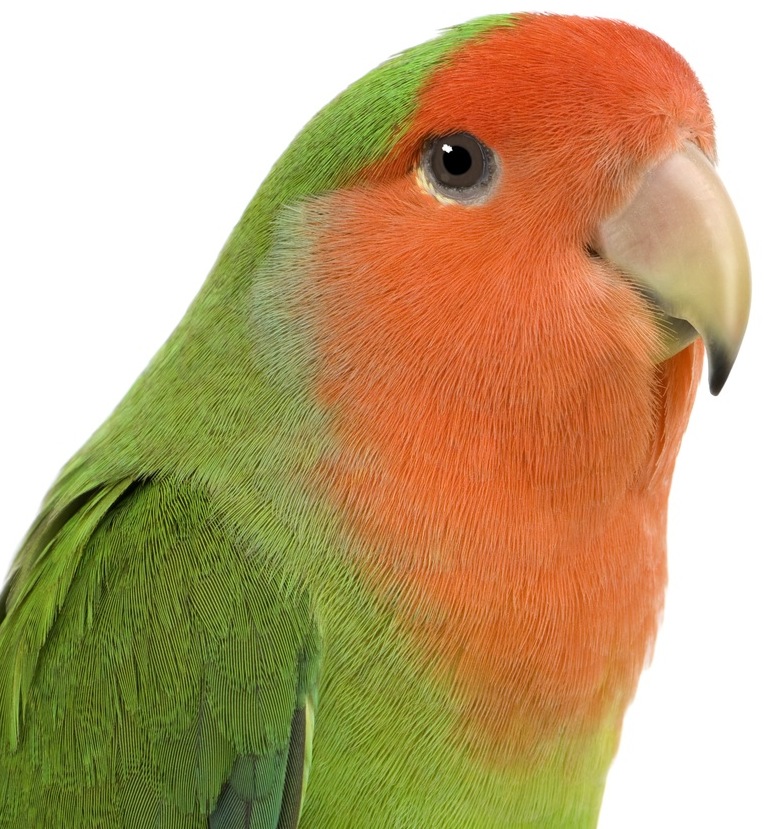
Origins: South-west Africa.
Length: 15cm (6in).
Appearance: Pinkish feathering extending over the face and down on to the upper breast. Blue area of plumage on the lower back, with the remainder of the body plumage being green, which is of a darker shade on the wings. Flight feathers blackish, bill horn-coloured. Sexes are basically identical in plumage, but the facial feathering of hens may be slightly paler in some cases. Young birds have dark markings on their bills soon after fledging.
Variants: The subspecies referred to as A.r.catumbella, from the Benguella region of Angola. Said to be discernible by its darker feathering overall, but not recognised in aviary stock today.
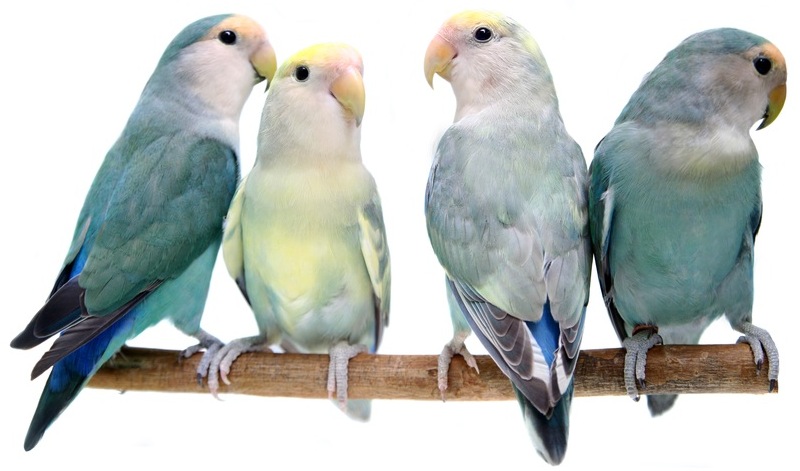
Colour forms: Many now established, to the extent that probably most apparently normal peach-faced lovebirds today carry genes for colour mutations. Among the earliest was the form described as the pastel blue, which is unusual in that it is not a pure blue mutation, but retains a slight greenish hue to its plumage. The facial feathering is a very pale salmon shade, rather than pure white. It was first recorded in the aviary of a Dutch breeder in 1963.
Yellow variants, including a lutino mutation with red eyes are also well-established. Dark factor birds are now widely-bred as well, in both blue and green series. A host of colour variants have been created from the primary mutations, of which one of the most distinctive is the cremino, which is predominantly lemon in colour. Rarer varieties or combinations will be more costly to acquire.
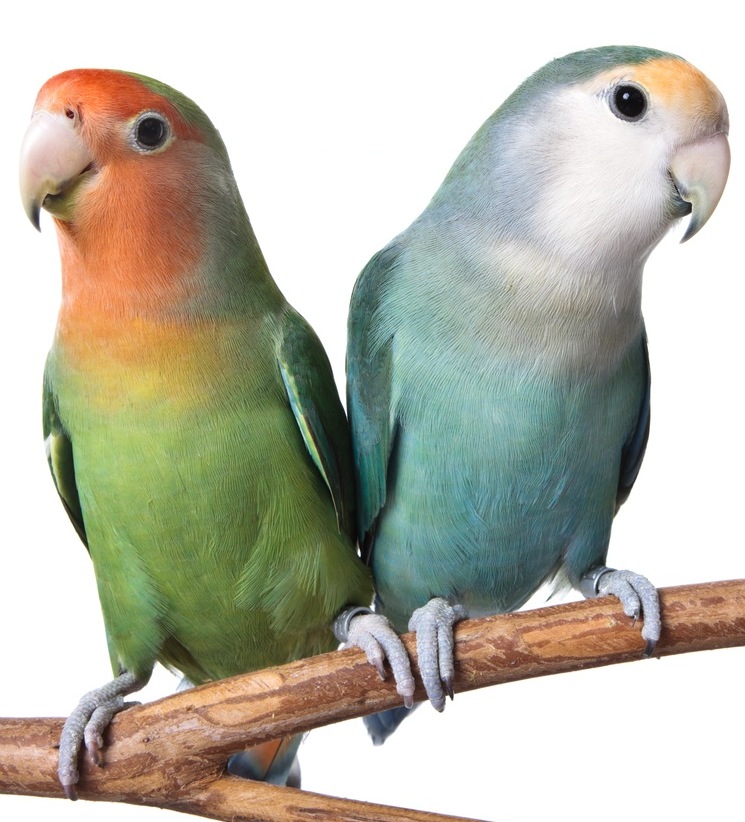
Sociability rating: These lovebirds can be aggressive, and should not be kept in the company of other birds. Although especially in Australia, they are frequently kept in colonies, peach-faced lovebirds can prove to be aggressive towards each other as well, and are capable of inflicting severe injuries with their stout bills. It is therefore safest to house them in individual pairs, which is also the best solution if you are seeking to breed a particular colour form.
Should you want to attempt to keep them on a colony basis, the birds should be in pairs and introduced to the aviary after the end of the breeding season, to minimise the risk of fighting. Do not try to introduce a new individual to an established colony - this will prove to be disastrous. Remove chicks once they are independent to prevent overcrowding.
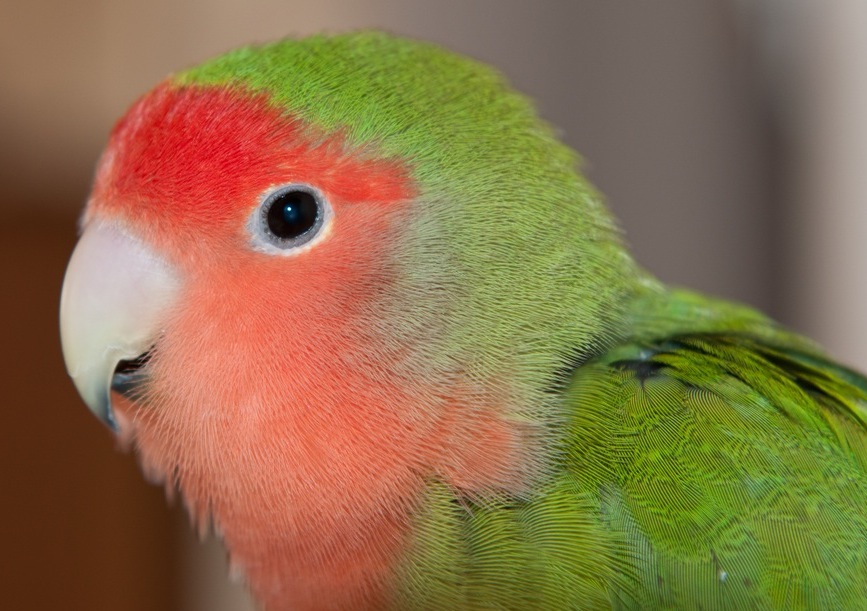
Suitability: Ideal for the newcomer to bird-keeping, as well as the more experienced enthusiast. Most commonly considered to be an aviary bird, but hand-reared chicks in particular can develop into superb companions - a fact underestimated in Europe and North America for example, compared with Australia where these small parrots are more commonly kept as household pets. They can learn to say a few words, but are not talented talkers.
Care: Straightforward, provided that the birds are encouraged to roost under cover when the weather is likely to fall below freezing, otherwise they may suffer from frostbite. It is also vital to ensure that there is effective double wiring if pairs are housed in adjacent aviaries. Otherwise, they will fight severely through the mesh, and are capable of badly injuring their neighbours as a result. Add wooden spacers between the mesh between the flights here if it starts to show signs of sagging, so as to keep them apart.
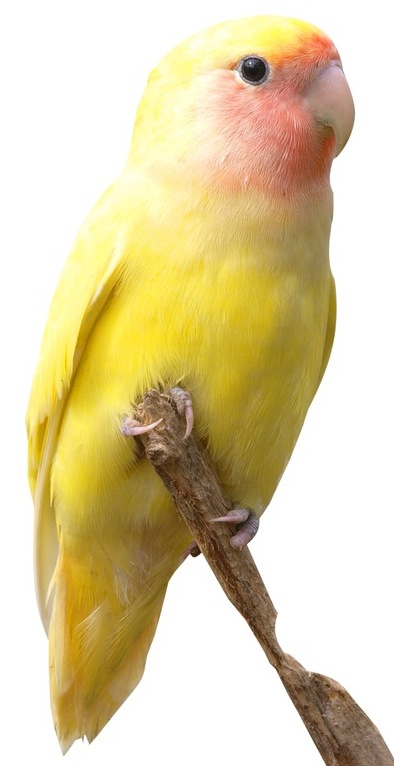
Feeding: Lovebird seed mixes are now available, or you can prepare your own, using millet seeds, plain canary, a little groats and some sunflower. Lovebirds can also be fed on a complete diet. Plenty of fruit, vegetables and greenstuff should also feature in their diet on a regular basis, with soaked seed being eaten readily, particularly when there are chicks in the nest. Some pairs may take egg food at this stage as well.
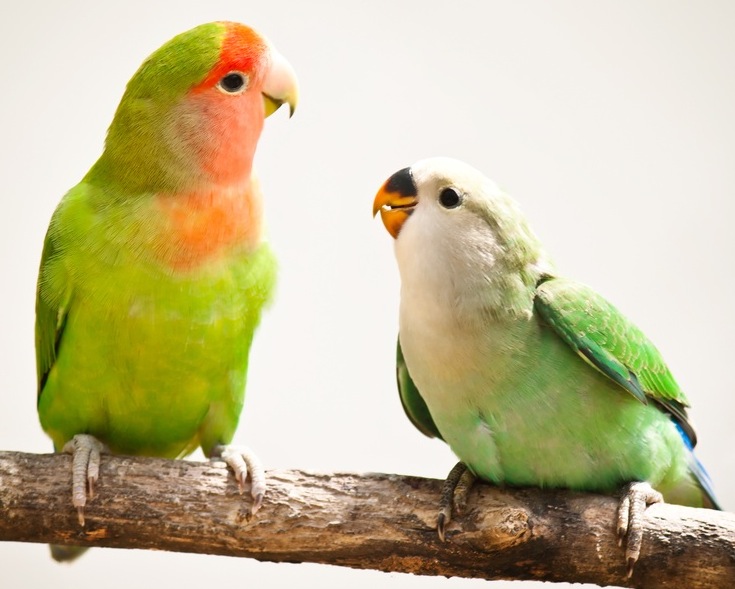
Breeding: A typical budgerigar or small parakeet-type nest box is ideal for these lovebirds. Unlike many parrots, they will construct a bulky nest, using strips of bark, stems from millet sprays and similar items, carrying the material tucked in among the feathers of their rump.
This is usually a task carried out by the hen although sometimes the cock bird will assist as well. Be sure to provide a good choice of fresh branches which can be used for nest-building purposes. The hen sits alone, although the cock bird may join her for periods.
Breeding data: 4-6 eggs; incubation lasts roughly 23 days; chicks fledge at approximately six weeks of age, and generally have dark markings on their bills, depending on the colour variety concerned.
Health care: Can be vulnerable to roundworms, particularly if housed in an aviary which previously accommodated Australian parakeets. Deworming is often adviseable - seek the advice of a knowledgeable avian veterinarian.
Potential lifespan: Potentially 10 years or more.